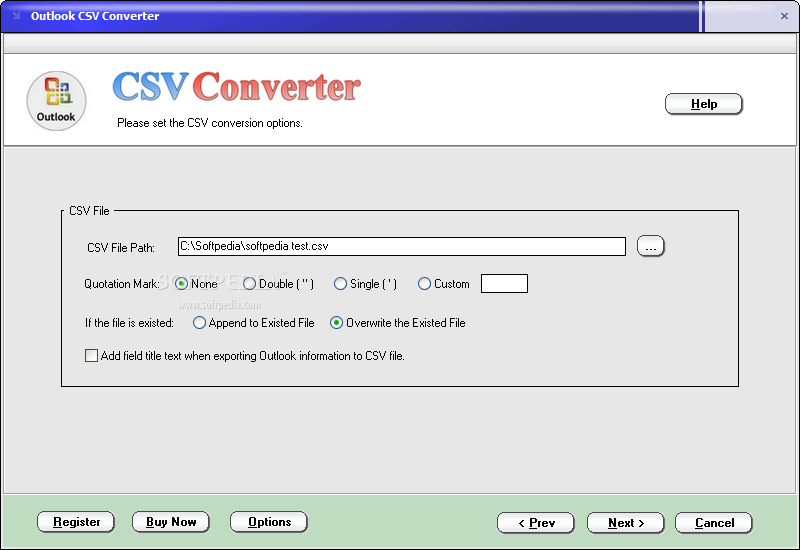
- Zip to csv converter zip file#
- Zip to csv converter full#
- Zip to csv converter code#
- Zip to csv converter zip#
Zip to csv converter zip#
Again, assuming there are no comments in the Central directory, the start location is stored in a pointer that is located in the bytes 6 to 3 from the end of the ZIP file. Then we need to get the start location of the central directory. Source = Binary.Buffer(File.Contents(ZIPFile)), Let's stuff the data into a binary buffer: Since that is a costly operation, we better make sure we only do it once.
Zip to csv converter zip file#
First, we have to load the entire ZIP file into memory. In order to get to that file size information, we have to do some pointer math. Here is a ZIP file where the local header is missing the file size information: Hopefully that is true for your ZIP files. Let’s explore the alternative option – reading the ZIP file from the end and using the central directory information.Īdmittedly the following approach assumes that no comments are entered at the very end of the ZIP file.
Zip to csv converter code#
This means that Power Query code that reads the ZIP file from the beginning (the majority of code examples do it that way) will be unable to process ZIP files that do not have the proper local header information. They ignore the local header (the file sizes are recorded as zero) and only write to the central directory. This is where the problem comes in with some of the ZIP files. Each file has its own local header (the File Entry Header), and at the end of the ZIP file a Central Directory repeats the file header information.īoth headers are supposed to contain information about the size of the compressed file. The compressed files are stored in the ZIP one after the other. (A quick excursion into the standard ZIP structure: (file_format)#Structure)
Zip to csv converter full#
(For a full solution that will work with multiple compressed files refer to. ZIP files come in all kinds of formats, and while most adhere to the basic standards of how a ZIP file should be structured, many legacy systems produce ZIP files that are decidedly non-standard.įor this article let’s assume that we are working with a very simple scenario – one ZIP file that only contains one compressed file. Here’s where the ZIP ecosystem throws a wrench into your plans.

In your data source you can store your raw data efficiently – oftentimes the CSV files inside the ZIP are very suitable for compression – and when accessing the ZIP rather than the CSV you can reduce the network traffic as well (let’s ignore the scenario where that uses compression too…) and improve the dataset refresh times. Your charges allow us to cover costs associated with the servers operation and to improve our service.Using ZIP files directly in Power BI is an attractive idea. If you exceeded the limit, you may register a prepaid plan - otherwise you will be charged by credit card during the conversion process (one-off payment). To avoid considerable servers loads we had to set conversions limits for each user - please see Free plan. If the input format is directory-based, it is necessary to pack whole directory - not only the content. Then it is possible to transform your data to any other coordinate reference system.įiles can be uploaded using multiple selections or packed into any supported format (ZIP, RAR, 7Z, TAR, GZIP). If the coordinate system of your input data is not present or not recognized correctly, it is possible to assign the correct one. Converter also supports more than 90 others vector and rasters GIS/CAD formats and more than 3 000 coordinate reference systems. Our online converter of Keyhole Markup Language Zipped format to Comma Separated Values format (KMZ to CSV) is fast and easy to use tool for both individual and batch conversions.


 0 kommentar(er)
0 kommentar(er)
